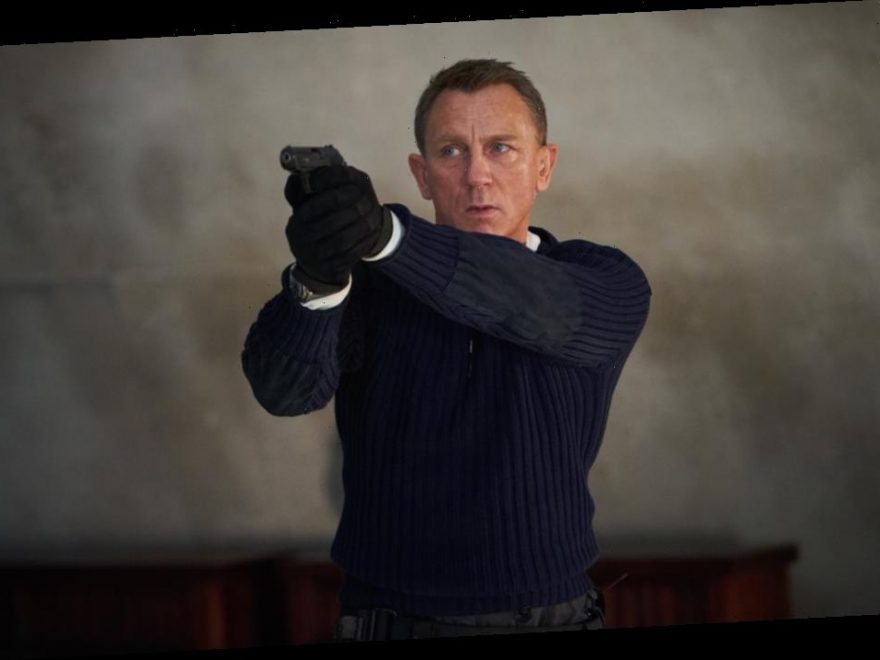
The future of shooting on film looks bright, thanks to a cadre of passionate directors led by Christopher Nolan and Quentin Tarantino, and Kodak, which recently signed an extension with Disney, NBCUniversal, Paramount, Sony, and Warner Bros. for longer term film stock purchase commitments. 2019 was a banner year for 35mm film releases, including four Best Picture Oscar nominees (“Once Upon a Time in Hollywood,” “Little Women,” “Marriage Story,” and “The Irishman” digital-film hybrid), but there were no noteworthy film releases shot and projected in 70mm.
However, there will be four prominent large-format releases in 2020, kicking off with a franchise first for James Bond, “No Time to Die” (April 10). Daniel Craig’s fifth and final outing as 007 is directed by Cary Fukunaga (“Beasts of No Nation”) and shot on both 65mm film and IMAX by “La La Land” Oscar-winner Linus Sandgren (which bodes well for exotic eye candy in Jamaica, Norway, Italy, and Scotland). “Tenet” (July 17) is Nolan’s time-bending espionage thriller costarring John David Washington (“BlacKkKlansman”) and Robert Pattinson (“The Batman”), shot by go-to cinematographer Hoyte van Hoytema (“Dunkirk,” “Interstellar”), who’s revolutionized shooting in IMAX and should have some new wrinkles for this Bond on steroids adventure. “Wonder Woman 1984” (June 5), Patty Jenkins’ nostalgic, deep-dive into the period, is shot in mixed film formats by Matthew Jensen. And “Death on the Nile” (October 9), director-actor Kenneth Branagh’s return as Belgian detective Hercule Poirot on another exotic murder case, is shot in Egypt by cinematographer Haris Zambarloukos.
“To say that it was a banner year for film would be the understatement of the year,” said Steve Bellamy, president of Kodak’s Motion Picture and Entertainment division. “Kodak had massive film volume increases in every film format: 8mm, 16mm, 35mm, 65mm, black-and-white film, and a very large increase in film prints being struck.

“Tenet”
Warner Bros.
“The two biggest highlights were that we sold the most 65mm film of any year in cinema history, and the massive migration into 8mm and 16mm film from the next generation of auteur kids,” Bellamy continued. “We also are seeing a migration of series television moving to film.” Among the many series being shot on film are HBO’s ‘Westworld’ from Jonathan Nolan and ‘Succession’ and the upcoming Lakers ‘Showtime’ from Adam McKay.
Meanwhile, the list of 35mm film releases this year includes John Krasinki’s “A Quiet Place Part II” horror sequel (March 20, shot by Polly Morgan); Branagh’s “Artemis Fowl” fantasy adventure (May 20, shot by Zambarloukos); Justin Lin’s “F9” digital-film hybrid (May 22, shot by Stephen F. Windon); Judd Apatow’s “The King of Staten Island,” the semi-autobiographical dramedy about “SNL” comedian Pete Davidson (June 19, shot by “There Will Be Blood” Oscar winner Robert Elswit); Wes Anderson’s “The French Dispatch,” the colorful love letter to journalists (July 24, shot by Robert Yeoman); Edgar Wright’s “Last Night in Soho,” a horror romp about the Swinging Sixties (September 25, shot by Chung-hoon Chung); and Steven Spielberg’s “West Side Story” musical remake (December 18, shot by go-to cinematographer Janusz Kaminski).
Joining them are such indies as “The Banker” (March 6, shot by Charlotte Bruus Christensen), the George Nolfi-directed biopic about the rise and fall of ’50s black banker Bernard Garrett (Anthony Mackie); “Never Rarely Sometimes Always” (March 13, shot in 16mm by Helene Louvart), from director Eliza Hittman about the odyssey of a pregnant teen; “The 40-Year Old Version,” Radha Blank’s Sundance Award-winning directorial debut about her comedic struggles as a New York playwright with race and age (acquired by Netflix, shot in black-and-white by Eric Branco); Sofia Coppola’s “On the Rocks” (shot by Philippe Le Sourd), a daughter-father dramedy with Rahida Jones and Bill Murray; Netflix’s “The Devil All the Time” (shot by Lol Crawley), the Gothic thriller directed by Antonio Campos and starring Tom Holland and Robert Pattinson about a group of disturbed people suffering from post World War II trauma; and Sean Penn’s “Flag Day” (shot by Daniel Moder in 16mm), a drama about a con man trying to reconcile with his daughter, starring Penn along with daughter Dylan and son Hopper.

“Wonder Woman 1984”
Warner Bros.
One of the downsides, though, of the renewed interest in shooting large-format has been the shortage of 65mm and IMAX film cameras when multiple projects are in production at the same time. This happened last year with “Tenet” and “No Time to Die.” They managed to work it out, but there’s definitely a need for more cameras, so Logmar has stepped up to fill the void with the introduction of its light-weight, compact Magellan 65mm film camera. There should be several available this year. “So between the 65s that Arri has, the 65s that Panavision has…..and the 15-perf ones at IMAX, we should be beyond the tight zone,” said Bellamy.
But, to Bellamy, “the beauty and the emotive value of film is just unparalleled.” As proof, he pointed to the results achieved by the new Final Frame Luna scanner (with its 16K sensor) in capturing NASA’s rare, 70mm Todd-AO archival footage for the “Apollo 11″ documentary. “While we sat on the sidelines for most of the insane resolution argument, the Luna scanner now shows that you can shoot over 22.6K today,” he said. “Film allows you to basically be resolution agnostic. Capture on film and then scan to whatever resolution the market is at that time. But there is staggeringly more information in a frame of film than we’ve been led to believe.”
Popular on IndieWire
Source: Read Full Article
